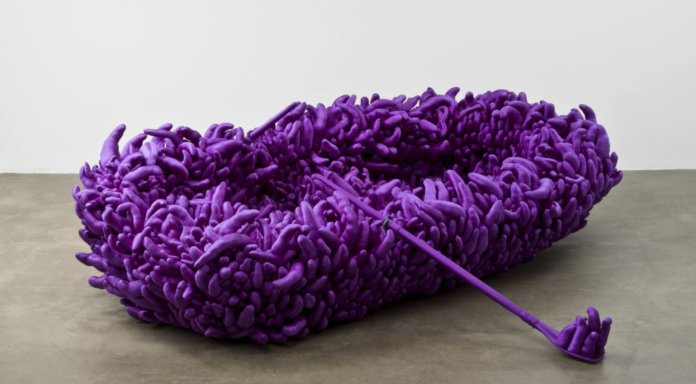Japanese, born 1929
Excerpt:
A vital part of New York’s avant-garde art scene from the late 1950s to the early 1970s, Yayoi Kusama developed a distinctive style utilizing approaches associated with Abstract Expressionism, Minimalism, Pop art, Feminist art, and Institutional Critique—but she always defined herself in her own terms. “I am an obsessional artist,” she once said. “People may call me otherwise, but…I consider myself a heretic of the art world.”1
Kusama was born in 1929 into a well-off but dysfunctional family in Nagano, Japan. Largely shielded from the horrors of World War II, she was, as she has claimed, nevertheless scarred by her mother’s cruelty, her father’s infidelities, and her family’s discouragement of her interest in art making. She started painting at the age of 10 when she began experiencing the visual and aural hallucinations that would plague her, while also fueling her creativity, for the rest of her life. She has maintained that her “artwork is an expression of my life, particularly of my mental disease.”2
After a stint studying traditional Japanese painting in Kyoto, Kusama left school and moved to New York in 1958. There she felt she could pursue her art unfettered—and make waves. “When I arrived in New York, action painting was the rage…” she reflected. “I wanted to be completely detached from that and start a new art movement.”3 She began by making large-scale monochromatic paintings, for which she quickly gained critical attention. By the 1960s, the prolific artist was producing paintings, drawings, sculpture, Happenings, installation, fashion, and film. In 1969, she founded Kusama Enterprises, a commercial outlet selling clothing, bags, and even cars. These products feature her singular aesthetic, characterized by her liberal use of polka dots and dense, repeating patterns to create a sense of infinity.
In 1973, Kusama returned to Japan. Two years later, seeking treatment for her obsessive-compulsive neurosis, she entered a facility where she lives and works to this day. She continues to produce paintings and sculpture, and, in the 1980s, added poetry and fiction to her range of creative pursuits.
Relevance:
I added Yayoi Kussma as one of the lit articles due to how she expresses her feelings through her artworks. If you ever had a chance to look up her other artworks, you will notice that she uses a lot of color in her artworks to represent herself. They are bright, contrasted, and pop into people’s eyes. She also addressed that she has mental diseases, and her artwork is an expression of her life. I think the way how she expressed herself and represented herself is super interesting. Although she has a mental disease, in other ways of thinking her mental disease, is she a representation of being fully introverted? Is it possible to ask people, in general, who do not claim that have a mental disease, to use color to represent and express themselves as well?
Reference:
The Museum of Modern Art. (n.d.). Yayoi Kusama [Artist page]. MoMA. https://www.moma.org/artists/3315




